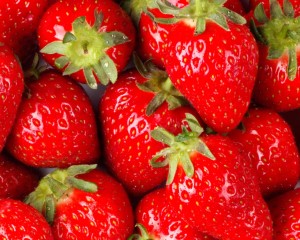This holiday season, why not give gifts that are good for the environment, health, or both?
We have complied a list of great eco-gifts. We want to thank all of our Facebook and Twitter fans and followers for your awesome recommendations! And if you have any to share after reading this, please let us know. We can always add.
Happy shopping!
FOOD & DRINK

Organic Wine Need a host gift? Bring along a bottle of organic wine to share. For a comprehensive review of reasonably priced organic wines, a quick education and hilariously candid and amusing reviews go visit Steve at Vinoclock. You can't go wrong.
Why It’s Green: Made from grapes free of harmful pesticides and chemicals. Less sulfides.
Health Benefit: Contains antioxidants, which are beneficial to the heart.
Brands: Frey Vineyards, The Organic Wine Company, EcoWine, and two great wine blogs Vinos Ambiz VinO'Clock
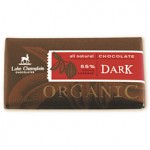 Organic Chocolate by Lake Champlain Chocolates. Everyone has a chocolaholic on their list. Give them chocolate that’s better for them.
Organic Chocolate by Lake Champlain Chocolates. Everyone has a chocolaholic on their list. Give them chocolate that’s better for them.
Why It’s Green: USDA Organic Certified. Preservative-free and Kosher-certified.
Local Perk: Made in northern New England, in good old Burlington, VT.
APPAREL & ACCESSORIES:
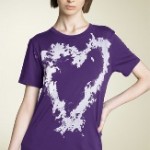 Green Clothing - Including Hemp, Organic Cotton and Bamboo
Green Clothing - Including Hemp, Organic Cotton and Bamboo
Why It’s Green:Free of pesticides, herbicides, insecticides and other harsh chemicals.
Health Benefit: Fabric feels softer and is easier on your skin since it's grown naturally.
Shops: Alternative Apparel, The Hempest, Soul Flower, Patagonia, Nordstrom
 Recycled candy wrapper clutch
Recycled candy wrapper clutch
Why It's Green: Made from recycled, defective candy wrappers rescued from being brought to landfills.
Unique Perk: Hand crafted, ensuring no two bags are alike.
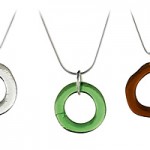 Recycled Jewelry
Recycled Jewelry
Why It’s Green: Jewelry maker Kathleen Plate uses recycled materials such as real beer, Coca-Cola, wine and water bottles to make her stylish creations.
Unique Perk: One-of-a-kind jewelry that isn't a cookie-cutter gift you’d find in a mall or department store.
ELECTRONICS
 Ten Cell Phones with the Lowest Radiation. Research this list before you buy: find the cell phone with the lowest amount of radiation.
Ten Cell Phones with the Lowest Radiation. Research this list before you buy: find the cell phone with the lowest amount of radiation.
Background: The Federal Communications Commission requires all cell phones be rated at 1.6 watts per kilogram or lower.
Health Benefit: The lower the amount of radiation, the less risk for brain and mouth tumors and behavior problems in children.
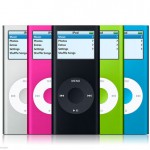 Apple Products—iPhone 3G, iPod nano, iPod classic and iPod touch—are now all BFR and PVC free.
Apple Products—iPhone 3G, iPod nano, iPod classic and iPod touch—are now all BFR and PVC free.
Background: Electronic companies have been using brominated flame retardant (BFR) and DECA as flame retardants for years, which are known reproductive and developmental toxicants.
Health Benefit: Apple now offers BFR and PVC-free products, which help reduce reproductive concerns (delayed onset of puberty, changes in adult brain function, and hormone imbalance).
HOUSEHOLD
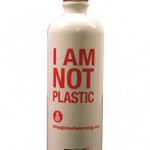 Stainless Steel or Aluminum Water Bottles. By giving this gift, you’ll help protect your loved one's health and the environment.
Stainless Steel or Aluminum Water Bottles. By giving this gift, you’ll help protect your loved one's health and the environment.
Why It’s Green: BPA-free and lead-free and waste reducing.
Health Benefit: Unlike plastic water bottles, these don't leach BPA. They reduce the risk for reproductive abnormalities, breast and prostate cancers, diabetes, heart disease and sexual dysfunction in males.
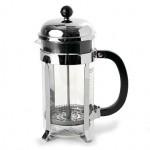 French Press If someone asks for a coffee maker this holiday season, your safest best bet is a French press. (Note to self: should do future blog post on organic and fair trade coffee!)
French Press If someone asks for a coffee maker this holiday season, your safest best bet is a French press. (Note to self: should do future blog post on organic and fair trade coffee!)
Background: Many commercial coffee makers filter steaming hot water through plastic to make coffee. This leaches the chemical BPA.
Why It’s Green: BPA-free and does not require the use of filters, which saves paper, waste and transportation thereof.
Health Benefit: See scary BPA info above.
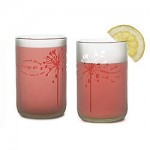 Recycled Glasses These frosted glasses are made from the bottom halves of Semillon bottles rescued before reaching the landfill.
Recycled Glasses These frosted glasses are made from the bottom halves of Semillon bottles rescued before reaching the landfill.
Why It's Green: Made from recycled glass. Because they are made from prefab bottles that don't need to be crushed or melted, the glasses use less energy to create than normal glassware.
Unique Perk: Recycled, each set is one-of-a kind and has a unique frosted tint.
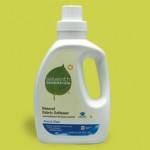 Seventh Generation Gift Basket Put together a basket of Seventh Generation products
Seventh Generation Gift Basket Put together a basket of Seventh Generation products
Why It's Green: Seventh Generation offers non-chlorine bleached, 100% recycled paper towels, bathroom and facial tissues, and napkins; non-toxic, phosphate-free cleaning, dish and laundry products; plastic trash bags made from recycled plastic; chlorine-free baby diapers, training pants, and baby wipes; and chlorine-free feminine care products, including organic cotton tampons.
Health Benefit: Their products save natural resources, reduce pollution and keep toxic chemicals out of the environment and your home.
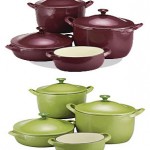 Cast Iron or Stainless Steel Cookware. If you need to buy cookware, **avoid "non-stick" at all costs**.
Cast Iron or Stainless Steel Cookware. If you need to buy cookware, **avoid "non-stick" at all costs**.
Background: "In two to five minutes on a conventional stove, cookware coated with Teflon and other non-stick surfaces can exceed temperatures at which the coating breaks apart and emits toxic particles and gases linked to hundreds, perhaps thousands, of pet bird deaths and an unknown number of human illnesses each year," according to the Environmental Working Group.
Health Benefit: The above ought to convince you.
HOMEMADE GIFTS
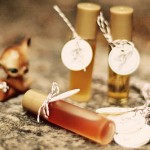 Do It Yourself Perfume
Do It Yourself Perfume
Background: 95% of scented products on the market are made largely or entirely of synthetic chemicals, usually derived from petroleum or coal tar, thought to be endocrine disruptors, which can interfere with hormones, puberty and growth and even cause birth defects and cancer.
Health Benefit: You'll encourage your loved ones to wear a safer alternative, reducing their health risks. Plus, they'll smell great!
 Nontoxic Cosmetics
Nontoxic Cosmetics
Background: Like perfume, cosmetics are not regulated by the FDA. The chemicals they contain, such as lead in lipstick, have been linked to various cancers, developmental/reproductive toxicity, and endocrine disruption.
Health Benefit: You'll not only protect your loved ones by making their gifts with safe ingredients, but you'll educate them on the ugly side of the beauty industry.
PETS--Why leave out Fido and Sparky?
 Safe Squeaky Toys for Dogs
Safe Squeaky Toys for Dogs
Why It’s Green: Made from 100% organic cotton and natural dyes from plants and minerals.
Health Benefit: Certified non-toxic, chemical-free, saliva resistant and has a reduced allergy level.
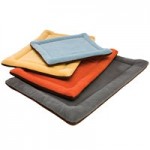 Eco Nap
Eco Nap
Why It’s Green: Made from 100% Post Consumer recycled plastic.
Comfort Perk: Eco Nap has inner stuffing for added comfort and top stitching for added support.
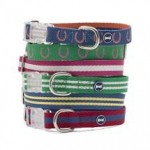 Collars
Collars
Why It’s Green: Made from 100% recycled materials.
Usability Perk: Clear, side-release adjustment at the handle makes it easy to clip around anything.
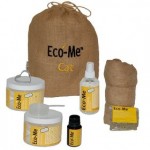 Eco me cat
Eco me cat
Why It’s Green: Made from 100% natural, everyday kitchen ingredients and essential oils like rosemary, citronella and lemongrass.
Health Benefit: Unlike traditional flea remedies which use toxic chemicals and have which have been linked to thousands of animal poisonings and deaths, this is safe for your pets health.
SPORTING GOODS
 Voltaic Daypack Backpacks
Voltaic Daypack Backpacks
Why It’s Green: Keeps your electronics charge through solar power.
How It Works: It charges your mobile phone, camera, MP3 player or PDA by using waterproof solar panels. An internal Li-Ion battery pack stores the power power.
 Crank Powered Radio/Flashlight
Crank Powered Radio/Flashlight
Why It’s Green: Generates power by hand crank, instead of batteries or wall plug.
Usability: Great for power outages and outdoor activities, like camping.
Other Websites and shopping guides:
WEBSITES AND SHOPPING GUIDES
*Bubble and Bee Organic
*Campaign for Save Cosmetics
*Environmental Working Group
*Ethical Shopper
*Gifts.com
*Guffly
*Seventh Generation
*Tree Hugger and their holiday gift guide
*Uncommon Goods
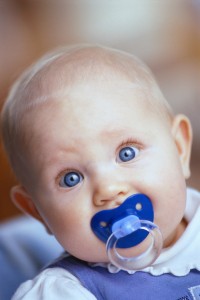

![MP900337413[1]](https://www.good-chemistry.org/wp-content/uploads/2011/08/MP9003374131-214x300.jpg)
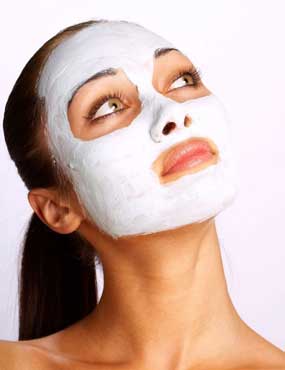 I am currently in a class at UVM entitled Women’s Health and the Environment. One of the most recent topic we've explored is the crazy and dangerous world of cosmetics.
I am currently in a class at UVM entitled Women’s Health and the Environment. One of the most recent topic we've explored is the crazy and dangerous world of cosmetics.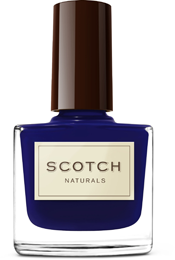
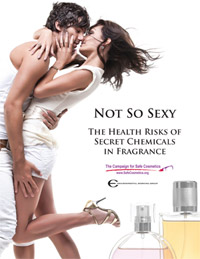
 A study by the Environmental Working Group revealed
A study by the Environmental Working Group revealed 
 Organic Chocolate by
Organic Chocolate by Green Clothing - Including Hemp, Organic Cotton and Bamboo
Green Clothing - Including Hemp, Organic Cotton and Bamboo Recycled candy wrapper clutch
Recycled candy wrapper clutch Recycled Jewelry
Recycled Jewelry  Ten Cell Phones with the Lowest Radiation
Ten Cell Phones with the Lowest Radiation Apple Products—iPhone 3G, iPod nano, iPod classic and iPod touch—are now all BFR and PVC free.
Apple Products—iPhone 3G, iPod nano, iPod classic and iPod touch—are now all BFR and PVC free. Stainless Steel or Aluminum Water Bottles.
Stainless Steel or Aluminum Water Bottles. French Press
French Press Recycled Glasses
Recycled Glasses  Seventh Generation Gift Basket
Seventh Generation Gift Basket Cast Iron or Stainless Steel Cookware.
Cast Iron or Stainless Steel Cookware. Do It Yourself Perfume
Do It Yourself Perfume Nontoxic Cosmetics
Nontoxic Cosmetics  Safe Squeaky Toys for Dogs
Safe Squeaky Toys for Dogs Eco Nap
Eco Nap Collars
Collars Eco me cat
Eco me cat Voltaic Daypack Backpacks
Voltaic Daypack Backpacks
